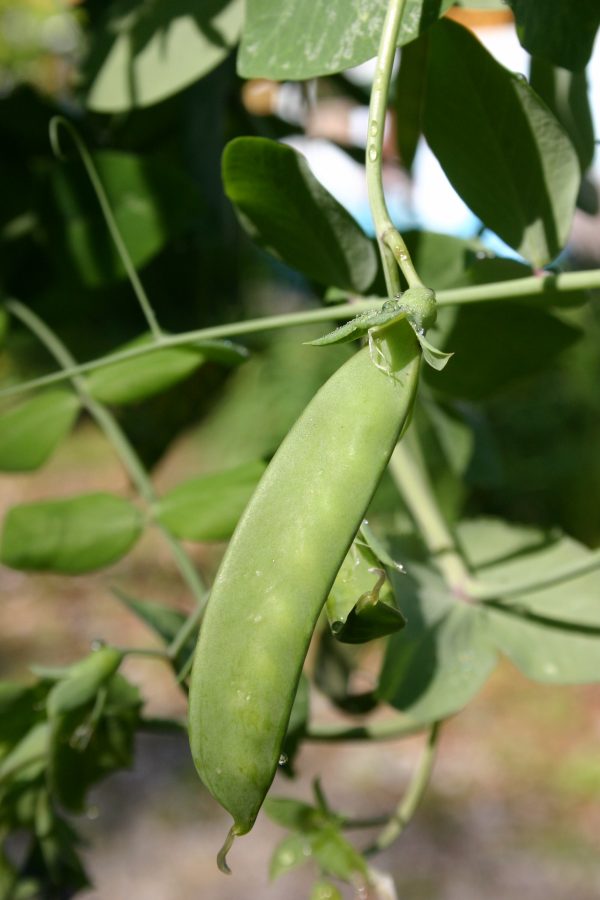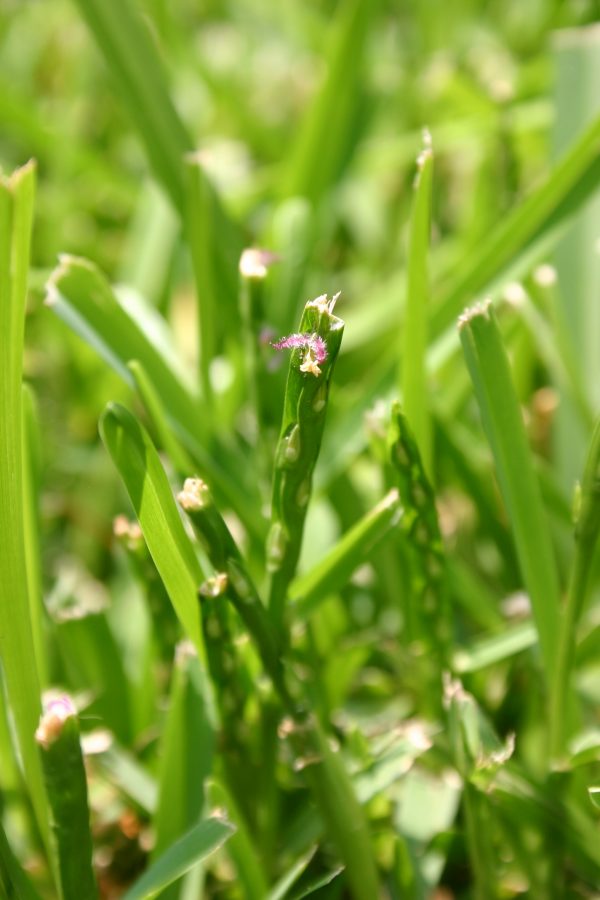Pea, English and Snap

Pisum sativum var. sativum
Pisum sativum var. macrocarpon (Sugar Pea)
Peas are decidedly cool-weather plants, intolerant of hot weather. As soon as the weather warms up, production ceases, much to the dismay of many pea-loving gardeners. Plus, peas lose their flavor quickly after harvest, which explains why peas from the market are never as flavorful as those picked fresh.
• More detailed information can be found in The Georgia Fruit & Vegetable Book by Walter Reeves and Felder Rushing
• See also:
“Picking the vines” as the peas develop in your garden is a sure way to have the best-tasting vegetables on your kitchen table. Gardeners grow peas for the immature, edible pods (sugar or snow peas); for the edible pods with immature seeds (snap peas); or for the mature seeds (English or garden peas), which are shelled out for use.
WHEN TO PLANT
Peas, like onions and Irish potatoes, must be planted as early in the season as possible – experienced gardeners usually “row up” part of the garden in the fall just for these early vegetables. Sow peas in the garden as soon as the soil can be worked in spring, between Valentine’s Day and mid-March. The seeds germinate when soil temperatures reach about 45 degrees Fahrenheit. To produce a fall crop, use heat-tolerant varieties, and sow them in late summer – late August or early September – so they mature in the cool weather of fall.
WHERE TO PLANT
Peas need full sun (8 to 10 hours will suffice) for full production. Since they will be planted very early, a soil in a part of the garden that drains well and dries out early in the spring is an advantage. For late production, partial shade (filtered sun all day or shade part of the day) shields the plants from intense heat and may prolong the season.
HOW TO PLANT
By preparing the soil in the fall, you can sow the seeds at the earliest opportunity in the spring without having to wait to till the soil. Peas are legumes; they derive their nitrogen from the air and do not need nitrogen fertilizers. Whether preparing the soil in spring or fall, apply a garden fertilizer, such as 5-20-20, at a rate of 11/2 pounds per 100 square feet of garden. Spade or rototill the soil. (See “Soil Preparation” in the introduction to the vegetable garden.) Rake out the seedbed and leave it over winter if you till in the fall. Peas may be either bush or vining types. Sow seeds 1 inch apart and 1 inch deep in rows 12 to 18 inches apart. Thin seedlings to 8 to 10 inches apart. (You can recognize pea seedlings because they will be in rows and all look the same; weed seedlings will be randomly spaced, and all will look different.) In a bed, sow seeds in rows across the bed, or plant double rows, 6 inches apart along each side of the bed, and set supports between them.
CARE AND MAINTENANCE
Bush peas are self-supporting. Placing vining types on a support of some kind conserves space, makes picking easier, and keeps the peas from getting muddy every time it rains. Many gardeners use “pea sticks” to support both bush and vining plants. “Pea sticks” are small branches, 2 to 4 feet long, stuck in the ground along the rows to support the plants as they grow. Some enterprising garden centers collect such branches and offer them for sale each spring. Sugar and snap peas are nearly all vining types. Gardeners grow them on various kinds of trellises, fences, or poles, and biodegradable netting supported on stakes is a popular system too. After harvest is completed, the netting and vines are removed for composting. Peas need to be watered only during a dry spring; they require about 1 inch of water every 10 days. Since fall is often dry, fall crops usually need to be watered to get them to germinate and to achieve full production.
Peas generally don’t have major pests, but root-rot can be a problem in heavy clay soils during wet winters.
ADDITIONAL INFORMATION
Harvest English or garden peas when they are full sized and before the seeds begin to dry. Pods should be green, not yet turning tan. Harvest snap peas when the pods are full sized for the variety and before the seeds are mature. Harvest sugar peas when the pods are fully formed, but before the seeds begin to develop.
VARIETIES
Early, midseason, and late varieties of peas are available. Since the season is usually too short anyway, and plants have not finished producing by the time hot weather arrives, plant the earliest varieties. The wrinkled-seeded varieties listed here tolerate cold, wet soils better than smooth-seeded varieties.
Varieties
Days to Maturity
Comments
English Peas:
Alaska
57 days
Early.
Little Marvel
63 days
Old standard.
Mr. Big
58-60 days
Sweet flavor, needs no support. AAS.
Sparkle
60 days
Freezes well.
Snap or Edible-pod Peas:
Early Snap
60 days
Thick pods.
Sugar Daddy
72 days
Stringless
Sugar Lace
65 days
Sweet, good producer.
Sugar Snap
74 days
The original snap type, vining (needs support). AAS.
Sugar Peas:
Dwarf Gray Sugar
65 days
Tall.
Snowbird
58 days
pods in clusters.













